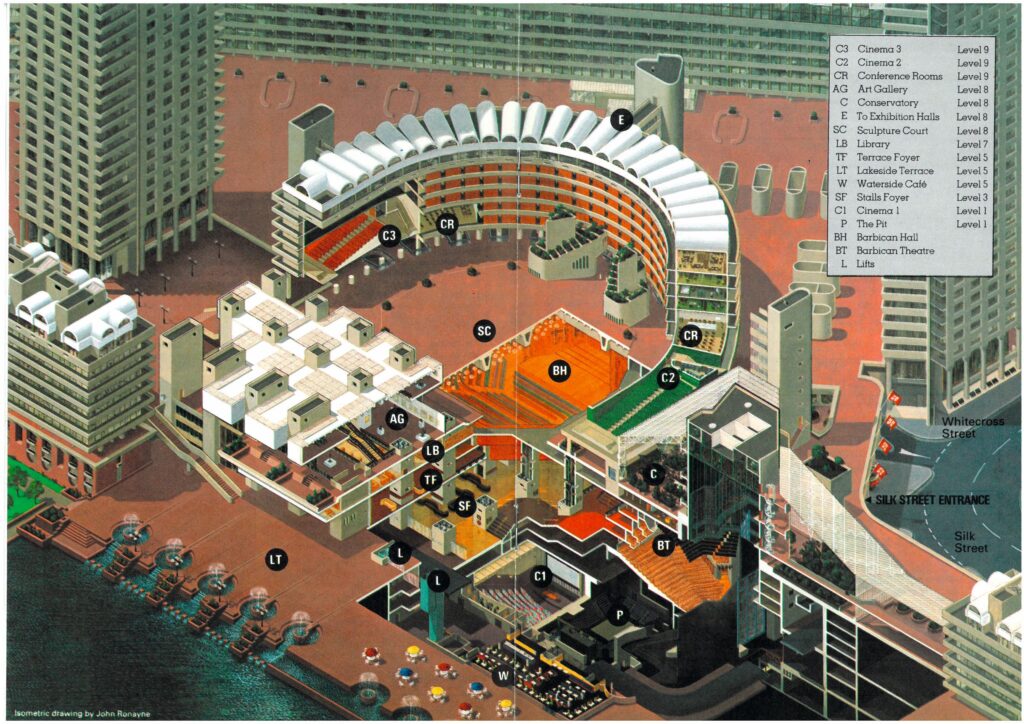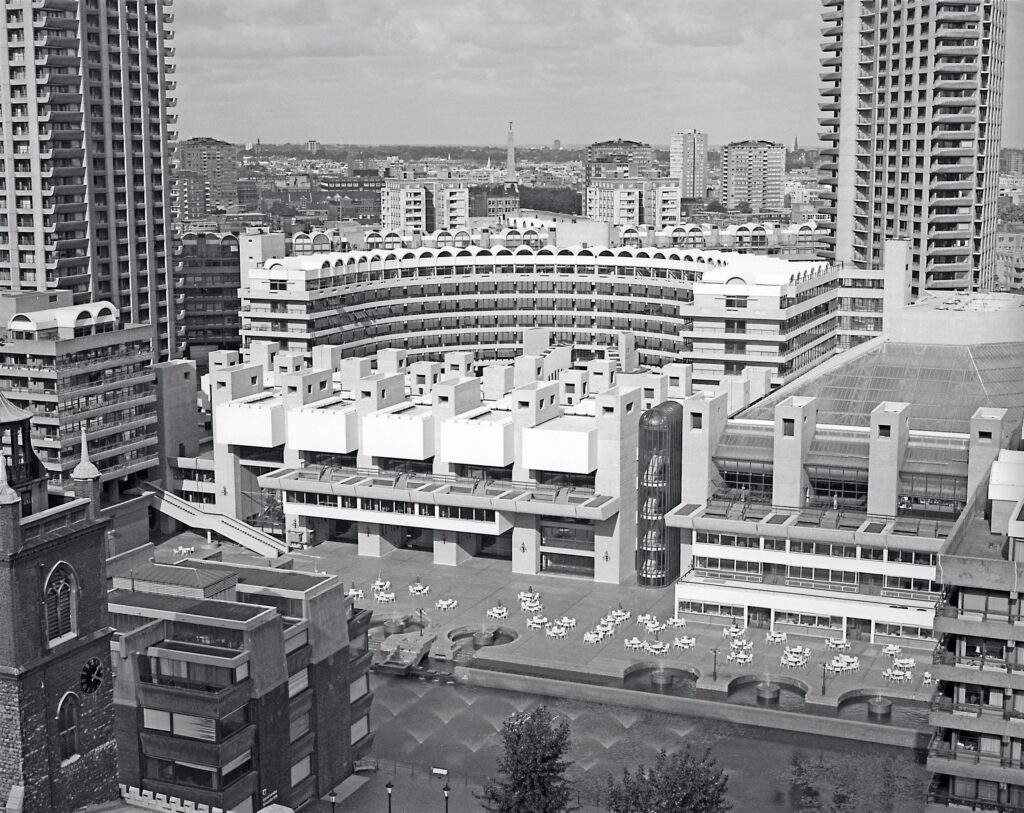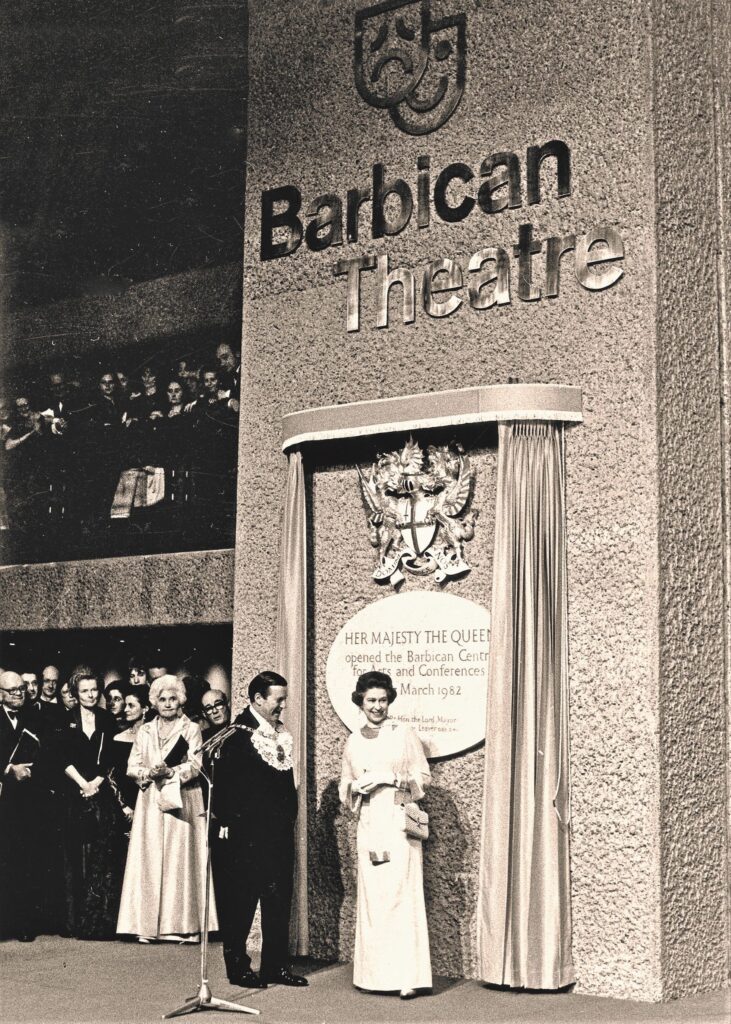
Building Utopia: The Barbican Centre
Nicholas Kenyon et al, Batsford, 2022, 288pp, fully illus., £40
ALEXANDER ADAMS acknowledges a modernist monument’s coming of age
My first exposure to the Barbican Centre came obliquely. In the children’s science-fiction drama The Tripods, when the producers for the (somewhat cash-strapped) BBC programme had to come up with a futuristic city-cum-biosphere in 1985, they selected the Barbican as one filming location. The palm-filled Barbican conservatory was suitably modern and exotic – at least for a child in the provinces. Years later, I worked in an office adjacent to the Barbican and walked its disorientating aerial walkways daily by rote, knowing that any clever shortcut would lead me inevitably and inconveniently astray. Barbican library became my local library.

When it was built, between 1972 and 1982, the Barbican Centre was the UK’s most ambitious urban-planning project to reach construction stage. It houses cinemas, concert halls, exhibition galleries, conference rooms, a theatre, restaurants, shops, cafés, a library and car park in an estate that consists of 2,000 residences, mostly in high-rise towers, all built in a Brutalist style. The new hardback Building Utopia: The Barbican Centre marks the 40th anniversary of the Barbican Centre’s completion, the 50th anniversary of its commencement and (approximately) the 65th anniversary of its conception. Multiple specialist writers cover the origins of the project, the politics and development of the building process and outline the highlights and remit of the cultural activities of the centre. A plethora of photographs capture the centre throughout its operation, from construction up to today, with some shots of classic performances and memorable events.
The site of the Barbican Centre is Aldersgate, next to Silk Street, Beech Street and Whitecross Street, close to St Paul’s Cathedral in the City of London. The site had been bombed almost completely flat during the Blitz and thus the location presented itself for wholesale redevelopment – on a grand scale, integrating accommodation and facilities. It was already served by Moorgate Station (Northern line underground and mainline) and was within walking distance of the offices and banks of the City. There was little residential consultation – following wartime devastation, Cripplegate district had a residential population of 58. The photographs of the flattened district, with St Paul’s in the background, is a stark reminder of the state of British cities in the post-war aftermath.
It seems the impetus behind having so many residences was partly political. Sir Nicholas Kenyon, former Managing Director of the Barbican Centre, writes:
The vanishing residential population of the Square Mile posed an existential threat to the survival of the Corporation [of the City of London], with its independent governance and long traditions, for there was a serious possibility in the post-war years that, without residents and voters, there might be a move to incorporate the City into London County Council.
Hostility from LCC and the Arts Council caused friction with the Barbican Centre and led to tussles over funding and control. LCC wanted greater commercial development; the Corporation wanted residences and arts. The Corporation won out and architects Chamberlin, Powell and Bon were appointed to design the centre and estate buildings. An initial costing of £10m was eventually to balloon to £150m by the time of completion.

The scale of the project is still – in our age of mega-structures – impressive (‘the largest single building for the arts in the Western world.’) The over thirty lifts include one that can transport a twenty-tonne lorry. The distinctive unpainted pitted concrete surfaces of walls were originally smooth before they were pick-hammered by men with pneumatic drills. This was time-consuming and thus expensive. Some aspects were flawed in design. The sculpture courtyard was rarely used because the weight of pieces was considered a potential structural danger to the building below. The gallery space has always been disappointing – a reflection of its late inclusion in the design – and has never lived up to the other facilities of the venue.

The opening of the Barbican Centre on 3 March 1982: the Queen unveiling the plaque in the foyer, accompanied by The Rt Hon the Lord Mayor Sir Christopher Leaver. Credit: Barbican Archive
When the centre was opened by the Queen on 3 March 1982, the building seemed anachronistic – both behind the times and ahead of them. The building seemed ponderous and unsympathetic, alien in its stylistic unity; cultural tourism was not as developed and streamlined as it would become so there were many doubts about the viability of a costly arts hub. The architecture seemed heavy and uncompromising in a time when Post-Modernism was jettisoning concepts of “truth to materials”, Brutalism and stylistic conformity. Its broad walkways and windswept courtyards seemed too ambitious and forbidding; its thick brass railings seemed passé. More than anything, Brutalism’s intimidating size and lack decorative concession seemed anti-human and indicative of failed visions of Communistic Eastern Europe and corner-cutting city councils. Today, attitudes to Brutalism are changing. Brutalism is an Instagram favourite topic and subject of photo essays and coffee-table books. The high aspirations and unapologetic futurity of Brutalist concrete structures exhilarates the young urban crowd.
The London Symphony Orchestra has been resident at the Barbican since it opened. The Royal Shakespeare Company acted as consultants as the theatre was designed. However, organisational politics and wrangles over income and subsidies caused Barbican to lose the RSC in an acrimonious parting in 2002 (‘The RSC were reluctant tenants. We were grumpy landlords.’) A transcription of a discussion between senior insiders notes that ‘the Corporation saw the conferences as money generators, and orchestras as money spenders.’ Balancing artistic considerations against commercial one is a constant negotiation, as is that of high culture versus experimental programming. (Although apparently the BBC-funded 1985 Stockhausen festival turned into a sell-out success.) Views on the acoustics of the concert hall were mixed; the acoustics noticeably improved once the Perspex hemispheres were removed from the ceiling. The opinions of performers, conductors and critics are summarised.

Most of the fittings are bespoke, which added to the cost but were congruent and effective within the overall design. (There is a great shot of Robin Day’s strongly coloured concert-hall seats.) The signage was considered inadequate from the beginning, leading to notorious navigation difficulties. A Barbican poster announced, ‘If Helen Mirren can find the new Barbican Centre before it opens in March, she will be appearing in Midsummer Night’s Dream.’ The book has many photographs of these details, as well as plans, maps, images of construction, aerial views and vintage shots. A selection of posters shows the breadth of programming over the last 40 years, reminding readers of memorable experiences. The authors are either specialists in their fields or they are individuals who have worked at a high level in Barbican Centre management. Short testimonies by knowledgeable figures (including performers, managers and users) intersperse longer narratives, which show palpable affection but address faults. Subjects include the Barbican’s architecture, theatre, music, art, cinema, typefaces and branding and plentiful insights into the management.
Building Utopia: The Barbican Centre presents a comprehensive and sympathetic presentation of one of modern Britain’s most iconic buildings. Not universally loved as a building – indeed, still disliked by many – the Barbican Centre continues to act as an important centre for high culture. Most importantly, the Barbican is largely an independent enterprise, with relatively low and indirect tax-payer subsidies. Today, the Barbican’s distance from the interfering hand of government is more vital than ever.
ALEXANDER ADAMS is an artist, art critic, novelist and poet. His most recent book is Artivism: The Battle for Museums in the Era of Postmodernism (Societas/Imprint Academic, 2022)